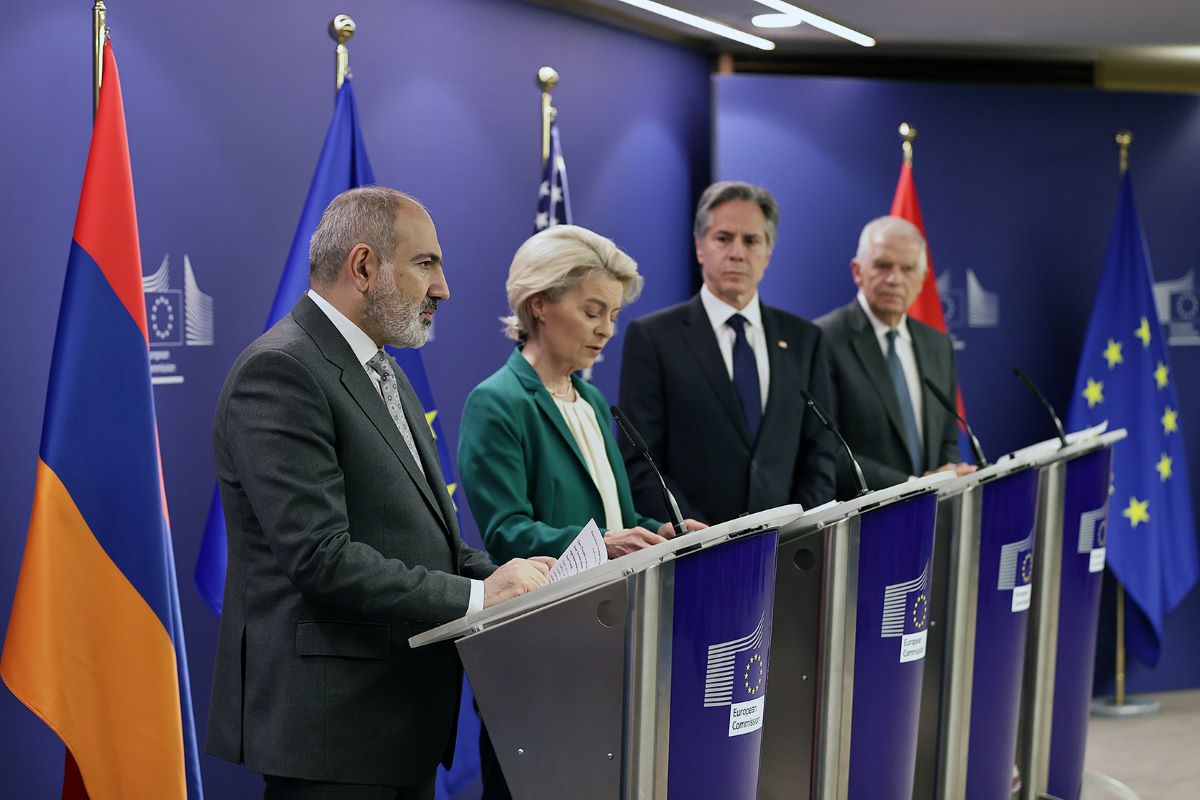"Is the West offering Armenia an insufficient proposal instead of genuine support?" Opinion
USAID assistance to Armenia
“As Armenia potentially faces a Berlin Crisis-scale blockade, Blinken and Power wish to provide Armenia with 2.5 percent of what they stand to lose. This is the diplomatic equivalent of giving a starving child in Sudan a peppermint candy and declaring it proof that the United States stands firm against hunger“, – Michael Rubin, a senior fellow at the American Enterprise Institute, believes.
He speaks about the consequences of Armenia refusing cooperation with Russia and the threats to the country’s economy from “vindictive president Vladimir Putin.”
In the article about the aid to Armenia, intended to be provided by the US and the EU following the Brussels negotiations, Rubin asserts that offering Armenia $72.5 million annually is “lackluster.” As justification, he compares the offered amount with support given to other countries.
On April 5th, in Brussels, US Secretary of State Antony Blinken, European Commission president Ursula von der Leyen, and EU Foreign Minister Josep Borrell met with Armenian prime minister Nikol Pashinyan. There was also a meeting between the Armenian prime minister and USAID administrator Samantha Power.
After the meeting in Brussels, secretary Blinken stated: “The United States will invest $65 million in Armenia’s economy, which is 50 percent more than the assistance provided two years ago.” Additionally, a joint statement was issued after the negotiations. It stated that the EU is prepared to provide 270 million euros over the next four years to support Armenia’s economy for promoting reforms and cooperation in all areas. The statement also mentioned, “The EU and the US intend to provide additional assistance to help Armenia mitigate risks, diversify trade, and strengthen economic and institutional resilience.”
Both the Armenian authorities and the expert community highly appreciated both the fact of the meeting and its results. The amount of the aid is not discussed in the country, much less criticized.
The discussion focuses on the support that Yerevan will receive, according to information published by the US Agency for International Development, as well as the opinion of Western experts on its effectiveness.
- “Armenia does not create dividing lines in the region” – Pashinyan
- Peter Stano: “The EU can assist Armenia, but it will not impose solutions”
- “Bold actions can lead to serious problems,” says Armenian economist
Details of USAID assistance
The United States Agency for International Development (USAID) has already released information on the assistance that will be provided to Armenia. The breakdown of the $33 million expenditure is as follows:
- $8.5 million for providing psychological and social support to displaced persons from Nagorno-Karabakh, addressing their housing issues,
- $8.6 million to support the security of the energy sector,
- $6 million to enhance food security,
- $2.5 million for human rights protection,
- $7.4 million to promote economic stability, digital governance, and regional integration.
USAID also intends to finance a “transport sector strategy aimed at regional integration,” which aligns with the Armenian government’s “Crossroads of Peace” initiative.
The announcement states that within this strategy, research will be conducted on how Armenia can integrate into global trade and transportation networks in the South Caucasus. This will not only promote trade between Armenia and its neighbors but also create new job opportunities and consequently increase income across the region.
Commentary
The European Union has promised to allocate Armenia €270 million over the course of four years, which is approximately $290 million, notes Michael Rubin, a senior fellow at the American Enterprise Institute.
“To offer Armenia $72.5 million per year suggests a lack of seriousness. It is one-third of what the United States gives the Central African Republic, even before adding the European contribution to that country, and just slightly more than aid to Moldova, a former Soviet state with roughly the same population,” Rubin asserts.
According to the expert, instead of genuinely supporting Armenia’s shift towards the West, the State Department and USAID are offering only a small financial aid package.
Rubin states that they are also attempting to “appease Azerbaijan,” including through aid. He points out that since 2021, the State Department and USAID have increased aid to Azerbaijan by over 1100 percent.
“Azerbaijan has reportedly received more than one arms delivery per day, flying in advanced weaponry from both Israel and Pakistan. Such a buildup comes not only after Azerbaijan uprooted and expelled Nagorno-Karabakh’s indigenous Armenian population, but also as it continues to attack Armenia proper and occupy Armenian land,” Rubin emphasizes.
Rubin underscores that “Armenians in the United States should compare the US-European offer with aid accompanying other peace processes“:
- Egypt receives about $1.3 billion annually in addition to the Camp David Accords, and Israel receives even more;
- when North Korea signed the 1994 Agreed Framework, Washington provided it with over $400 million in aid.
“Blinken and Power should not expect plaudits for their aid package but rather opprobrium, because they show how unserious they are,” Rubin believes.
In his view, a storm is brewing in the Caucasus, Armenia faces an existential threat from Azerbaijan and Turkey, as well as economic threats from Russia.
Seventy percent of all money transfers to Armenia ($5.7 billion) come from Russia. Additionally, 40 percent of all exports from Armenia go to Russia, which is also the main supplier of gas, the analyst reminds. And in these circumstances, according to Michael Rubin, Yerevan is being offered very little assistance compared to what the country stands to lose.
“After Russia’s Nagorno-Karabakh betrayal and its overt efforts to interfere violently in Armenian politics, Armenians deserve real democracy, security, and partnership,” the expert stated.




















